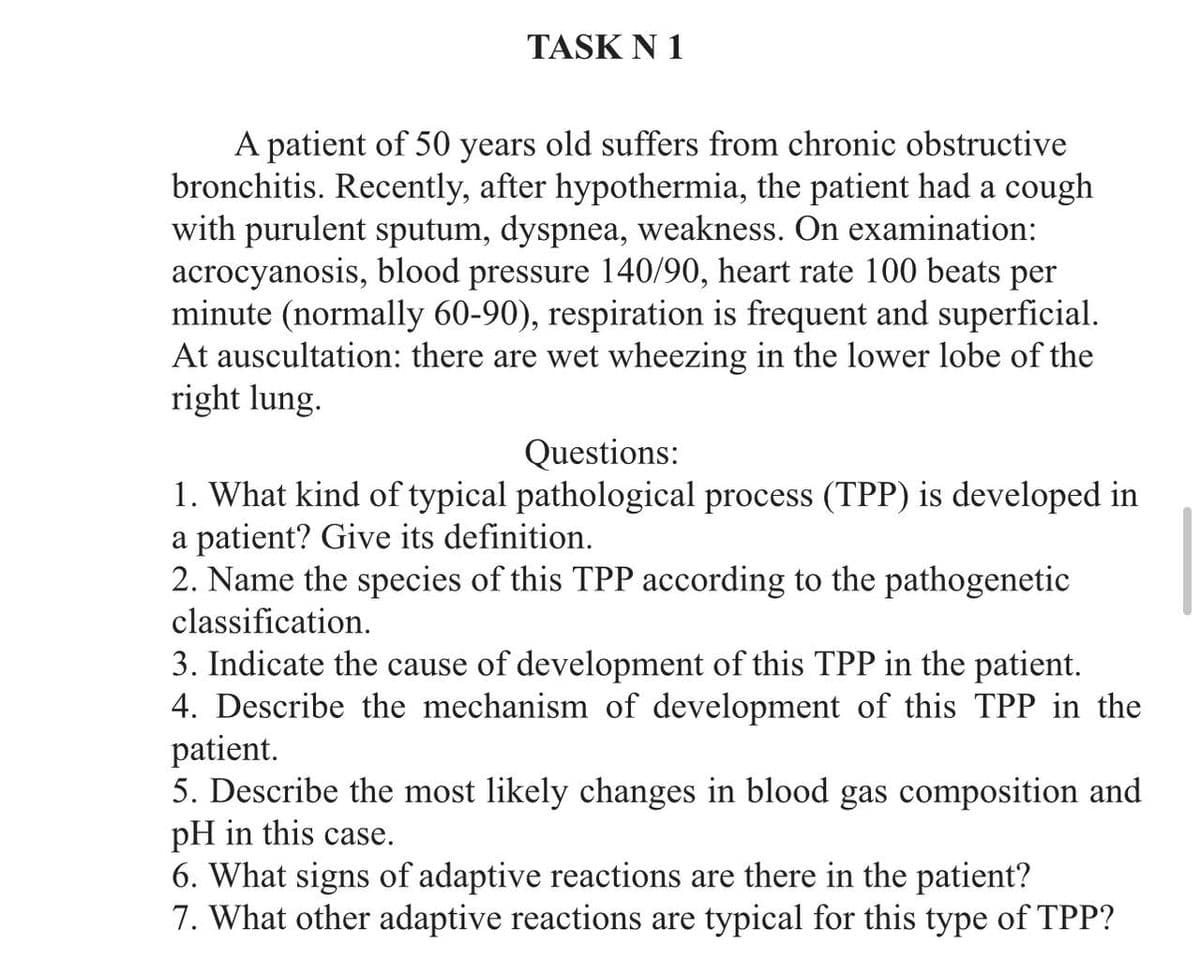1. What kind of typical pathological process (TPP) is developed in a patient? Give its definition. 2. Name the species of this TPP according to the pathogenetic classification. 3. Indicate the cause of development of this TPP in the patient.
1. What kind of typical pathological process (TPP) is developed in a patient? Give its definition. 2. Name the species of this TPP according to the pathogenetic classification. 3. Indicate the cause of development of this TPP in the patient.
Chapter3: Suffixes
Section: Chapter Questions
Problem C5CRE
Related questions
Question

Transcribed Image Text:TASK N 1
A patient of 50 years old suffers from chronic obstructive
bronchitis. Recently, after hypothermia, the patient had a cough
with purulent sputum, dyspnea, weakness. On examination:
acrocyanosis, blood pressure 140/90, heart rate 100 beats per
minute (normally 60-90), respiration is frequent and superficial.
At auscultation: there are wet wheezing in the lower lobe of the
right lung.
Questions:
1. What kind of typical pathological process (TPP) is developed in
a patient? Give its definition.
2. Name the species of this TPP according to the pathogenetic
classification.
3. Indicate the cause of development of this TPP in the patient.
4. Describe the mechanism of development of this TPP in the
patient.
5. Describe the most likely changes in blood gas composition and
pH in this case.
6. What signs of adaptive reactions are there in the patient?
7. What other adaptive reactions are typical for this type of TPP?
Expert Solution
This question has been solved!
Explore an expertly crafted, step-by-step solution for a thorough understanding of key concepts.
Step by step
Solved in 2 steps

Knowledge Booster
Learn more about
Need a deep-dive on the concept behind this application? Look no further. Learn more about this topic, biology and related others by exploring similar questions and additional content below.Recommended textbooks for you



